Bellavista: a vocation for excellence
According to Mattia Vezzola, it was a professional and personal matter that together took him to Bellavista and the attainment of the heights of quality in expressing the absolute uniqueness of identity and style of a company and a product.
A result achieved through the perfect integration between the various elements involved: “… I have always maintained that the people who collaborate with a company must not limit themselves to giving their professional service, but must feel part of the project of growth, really taking part as a privileged person within the project. That means being able to create themselves, together with the owners, the idea of the corporate brand…”
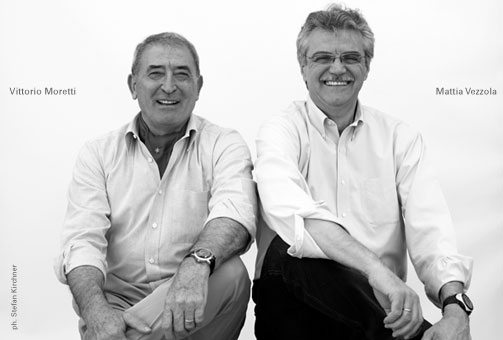
How did Franciacorta present itself at the beginning of your journey?
From the geological and oenological point of view, the territory was extraordinarily suitable for the production of excellent wines intended for fermentation in bottles. This is due to natural causes. But it was also, primarily, a territory that possessed great intellectual and propulsive energy, thanks to the intelligence of the men and entrepreneurs who live there and experience it with great naturalness.
My journey began with the assessment of the potential, at a historic moment, the intuition and desire for perfection of some men who then brought to Franciacorta the light of progress and a future.
All this at an extraordinary period towards the end of the seventies; a time of drive and energy focused exclusively on the production of quality.
And how was the Bellavista project incorporated?
It was established over time (not all at once, but gradual growth) and through the consistency of the direction taken (once taken, always maintained).
What were the stages along the way?
The company grew in the conviction that a vocation for making wine is the foundation. In the second place: the mainly natural management of viticulture, that was begun then, and the emotional/professional involvement of the men, acted as a trampoline for launching the underlying idea of the owner. Third aspect: a careful analysis of the creative direction of the sensory profile, that is, making wines that, nourished by the potential, could express the specific values of the men committed to making them and the characteristics of softness, elegance and gentleness that are inherent in the territory and the raw material. Fourth: applying respectful technologies that were synergies between the principle of tradition and the cutting edge. All this, also thanks to encounters that contributed to opening the mind and setting the key production points.
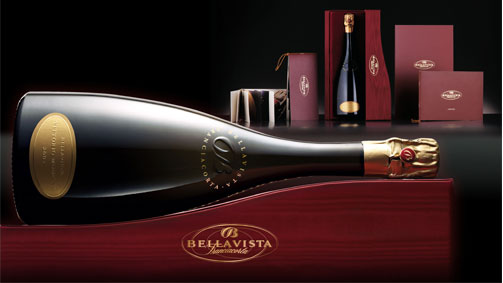
So, in that way, you acquired awareness of the territory’s potential and defined the taste of Casa Bellavista. This stage would have needed time…
Yes, around thirty years, but it hasn’t yet finished.
Ah, it’s not yet finished… but you will have defined the company lines.
There’s a design, of course, with an underlying idea that will be perfected over time. We started with three and a half hectares - today Bellavista numbers 200 hectares with an average age of the vineyards of 20 years, 42 employees of an average age of 39 years
with an average of 10 years experience in the field.
The real corporate assets, I would say.
Exactly! Being a company structured in order to value manual and intellectual work, it’s clear that the professional growth of each individual collaborator is decisive because the details are taken care of, assessed and valued. That takes years, time, generations.
Were there crucial stages during this 35 year long journey?
Yes, of course. Growth has also always taken place thanks to the confrontation, so to speak, between rather opposing positions but which have never regarded as intimidating. For example, following the path of quality usually conflicts with the financial interests of a company. The crucial point, then, is the iron conviction of the owner, firm and courageous, which allowed this path to be followed without hesitation. From the start, we identified the golden road and when a new project is drawn up, the two most important things are the direction and the pace. I don’t say that Bellavista got everything right, but without doubt it made very few mistakes. In that way, a viticultural heritage was discovered with a production philosophy firmly rooted in the family and the collaborators, first and foremost, and, as a result, in the wine that goes into the glass.
Among the various challenges and conquests of Bellavista is the Satèn project. I don’t know how many people realise that Bellavista originated this product. How did this began?
It began with a vision, by chance, an odd situation and the wish to challenge prejudices, especially of those who consider an elegant wine, a little sweet, a little sparkling, more suited to women’s tastes. A wine like this comes to be seen as inferior and downgraded, for a potential consumer, not of quality, or of low quality. In a nutshell, not really a good introduction for a product intended for a female public.
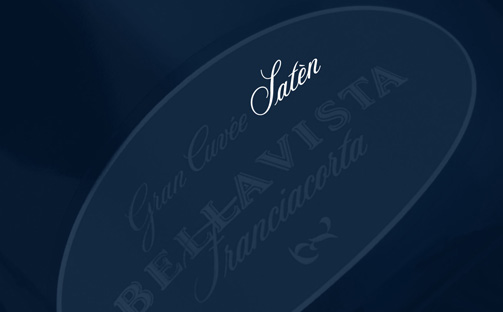
An anecdote clarified my ideas: I was in Venice, at dinner, with a friend. We saw a wonderful girl walking on the opposite side of the canal. A harmonious gait, great femininity and infinite musicality. We stopped eating, as did other people. It was illuminating. Specifically, I understood that the femininity that had paralysed a restaurant, deserved a wine with a different profile of quality and taste, elevated and not humdrum.
It was in ‘83/84. So I thought of a chardonnay grape, high in the hills, exposed to the south that would give rise to must, and so wines, of great grace, freshness, softness and crispness.
These wines, at least 50% coming from must fermented in old casks, gave greater complexity, more volume, more structure, more persistence.
Fermented in bottles with an atmosphere of less pressure, these wines display an extremely subtle cream and extremely sophisticated bubbles.
The term Satèn, which brings to mind, not entomologically but phonetically, the silkiness of chiffon, soft tissue, was the most effective of the names suggested by SGA. The name was then lodged and given to the Consortium and to our great pleasure was adopted by the whole territory of Franciacorta.
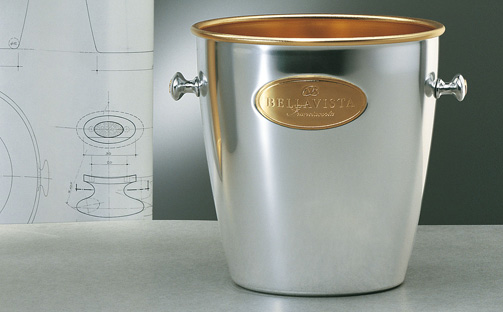
And, in this journey, what role does advertising play?
I have very clear ideas on the matter. But I must go back a step: a company can set itself the task of making the best wine in the world but if it is distributed or advertised badly, the company can only emerge from that at a disadvantage. And vice versa.
A company can create the most beautiful label in the world, entrust the marketing to the best distributor, but if the wine is mediocre, it will also emerge from that at a disadvantage.
I mean that a company must seek a balance between quality (not declared, but perceived by the consumer), straightforward and authentic advertising and an image that matches the reality.
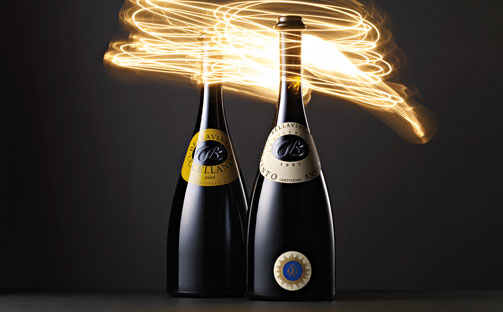
What did you set out to communicate, then?
What we are, through the form of the bottle, the label and the colours in harmony with the value of the wine as perceived by the consumer.
I have always maintained that the people who collaborate with a company must not limit themselves to giving their professional service, but must feel part of the project of growth, really taking part as a privileged person within the project. That means being able to create themselves, together with the owners, the idea of the corporate brand by emphasising the objective quality of the product.
Precisely in order for this harmony to be achieved, the agency must above all experience the company in all its complexity and difficulties. Otherwise, the advertising becomes abstract, generic and could relate to any other product of any other company.
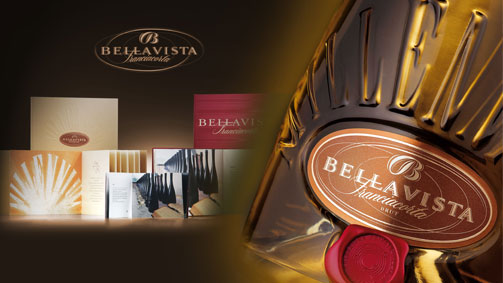
What do you need, on the other hand?
That every comma, every line, every colour, every remark bears witness to the commitment of the 42 people who work towards a shared objective down to the tiniest detail. For us, this is an important value.
We don’t choose a graphic, or a supplier, but a fellow traveller with whom we achieve an affinity of thought, behaviour, objectives.
The agronomy, the oenology, the marketing, the advertising and the graphic must be perfectly aligned.
It’s a principle you have always adopted.
Yes. A supplier who has been with you since the beginning knows how you think, what you want, you don’t have to explain a thousand things. The thousand things become prerequisites, so you grow together in the sublimation of the arguments.
Closer relations are built up and everyone’s looking in the same direction.
I often repeat one of my phrases: “You shouldn’t do what you want, but do what there is.” Saying: “I prefer this to that” is pointless, insignificant, superficial, and if after a little while you don’t like it any more, what do you, start from the beginning? No, you must do things that involve constant training and challenge.
For many, it’s trivial, but not for us.


